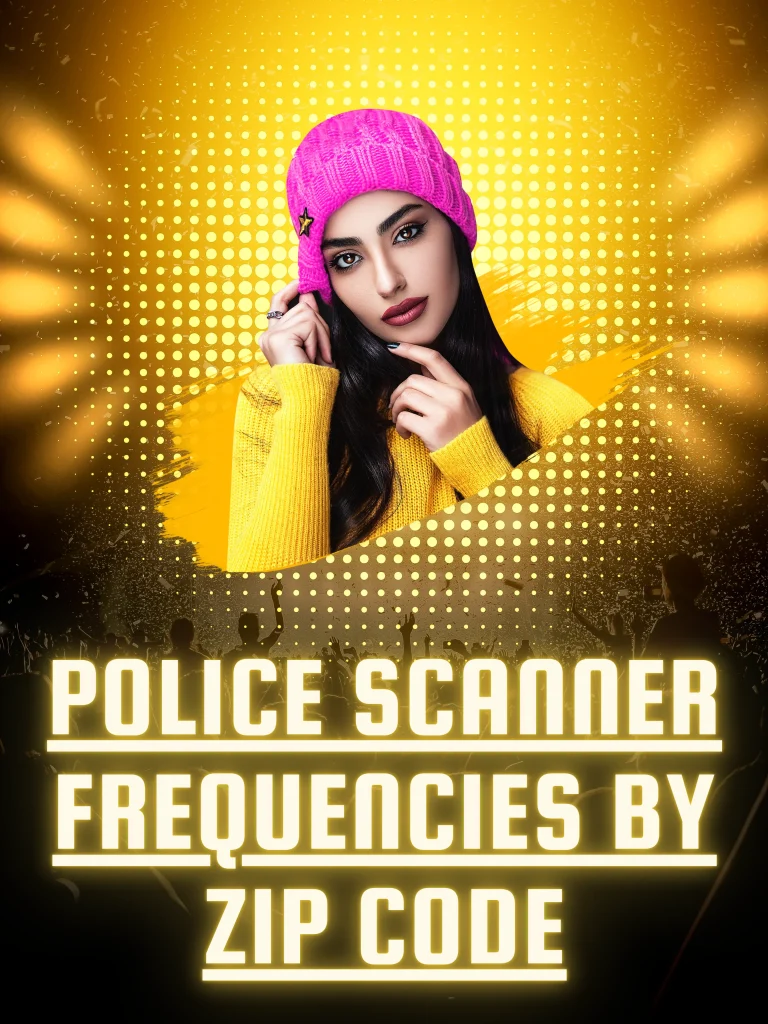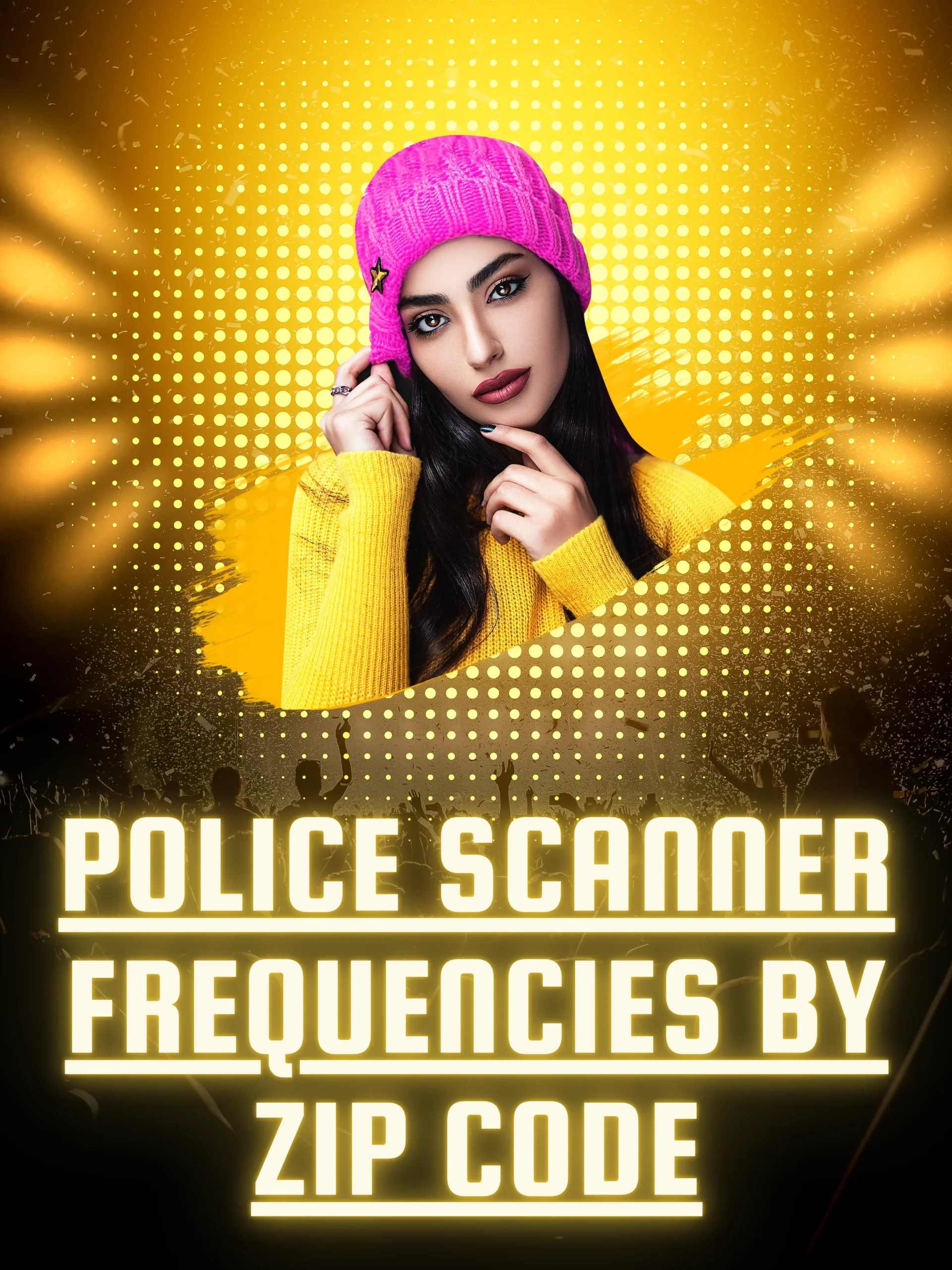Police scanners have long been a source of fascination and information for enthusiasts, journalists, and concerned citizens. They provide real-time access to police, fire, and emergency communications, offering insights into the daily operations of law enforcement agencies. One way to narrow down the vast array of radio traffic is by searching for police scanner frequencies by zip code. In this article, we will delve into the world of police scanner frequencies, explore how they are organized by zip code, the legal aspects of scanner usage, the benefits of monitoring, and tips for effectively tuning in.

Understanding Police Scanner Frequencies
Before diving into the specifics of police scanner frequencies by zip code, it’s essential to understand how these radio communications work. Police, fire, and emergency services use radio frequencies to communicate within their respective departments and with dispatchers. These frequencies are typically within the VHF (Very High Frequency) and UHF (Ultra High Frequency) bands.
Scanner radios are capable of tuning into these frequencies, allowing individuals to listen to these communications, provided they are within range and the transmissions are not encrypted. Here are the key components to understanding police scanner frequencies:
- Frequency Bands: Police scanner frequencies fall within the VHF (30 MHz to 300 MHz) and UHF (300 MHz to 3 GHz) radio bands. Different agencies may use frequencies within these bands to ensure clear and reliable communication.
- Trunking Systems: Some law enforcement agencies use trunking systems, which allow multiple users to share a set of frequencies efficiently. These systems can be more complex to monitor and may require advanced scanner models.
- Encryption: While most police scanner communications are open to the public, some agencies encrypt their radio transmissions for security and privacy reasons. Encrypted communications are not accessible to the general public.
Organizing Police Scanner Frequencies by Zip Code
Monitoring police scanner frequencies by zip code involves organizing the available frequencies based on geographic areas. Zip codes provide a convenient way to narrow down the radio traffic to specific regions, allowing users to focus on the local agencies and emergency services that matter most to them.
Here’s how to find and organize police scanner frequencies by zip code:
- Online Databases: Numerous websites and online forums provide databases of scanner frequencies organized by zip code. These resources can help you quickly identify the frequencies used by agencies in your area.
- Scanner Apps: Some sheboygan scanner apps and software programs allow you to input your zip code, and they will automatically provide a list of relevant frequencies. These apps often include features such as channel tagging and alert notifications.
- Scanner Manuals: Many scanner radios come with user manuals that include frequency lists for various regions. These lists may be organized by zip code or by city and county.
- Community Forums: Online scanner enthusiast communities often share frequency lists and updates based on zip codes. Participating in these forums can help you stay informed about local scanner activity.
Legal Considerations of Scanner Usage
While listening to police scanner frequencies is legal in many jurisdictions, there are essential legal considerations to keep in mind:
- Open Communications: In most cases, communications on police scanner frequencies are considered open and accessible to the public. However, this may not apply to encrypted or sensitive communications.
- Privacy Laws: It’s crucial to respect privacy laws and not use scanner information for illegal or invasive purposes. Recording and broadcasting scanner traffic without permission may be subject to legal restrictions.
- Local Regulations: Local laws and ordinances regarding scanner use may vary. Always research and understand the legal guidelines in your area before using a police scanner.
Benefits of Monitoring Police Scanner Frequencies
Monitoring police scanner frequencies by zip code can provide several benefits to users, including:
- Awareness: Scanner listeners can stay informed about local events, traffic accidents, weather-related emergencies, and law enforcement responses in real time.
- Community Engagement: Listening to scanner traffic can foster a sense of community engagement and awareness of local public safety issues.
- Safety: Being aware of emergency responses and incidents in your area can help individuals make informed decisions during critical situations.
- Journalism: Journalists and reporters often use police scanners to gather news and report on events as they unfold.
- Hobby and Interest: For enthusiasts, monitoring scanner frequencies can be an engaging and educational hobby, offering insights into public safety operations.
Tips for Effective Scanner Listening
To make the most of your police scanner listening experience, consider the following tips:
- Choose the Right Scanner: Select a scanner radio that suits your needs, taking into account factors such as frequency coverage, trunking capabilities, and ease of use.
- Stay Informed: Regularly check online databases and forums for updated frequency lists and information about changes in radio communications.
- Use Headphones: Using headphones can enhance the clarity of scanner audio and prevent disturbances to those around you.
- Understand Scanner Codes: Familiarize yourself with common scanner codes and terminology used by law enforcement agencies to better interpret radio traffic.
- Respect Privacy: Avoid sharing sensitive or personal information obtained from scanner traffic, and be mindful of the privacy of individuals involved in incidents.
- Monitor Multiple Channels: Program your scanner to monitor multiple channels simultaneously to stay informed about different agencies and events.
- Join Scanner Communities: Participating in online scanner enthusiast communities can provide valuable insights, updates, and support for fellow scanner listeners.
Conclusion
Listening to police scanner frequencies by zip code offers a window into the world of law enforcement, emergency response, and public safety in your local area. When used responsibly and in accordance with the law, monitoring scanner traffic can be an informative and engaging experience, whether you’re a concerned citizen, a journalist, or a scanner enthusiast. By understanding the fundamentals of police scanner frequencies, staying informed about legal considerations, and following best practices for effective scanner listening, you can make the most of this valuable tool for staying connected with your community.

